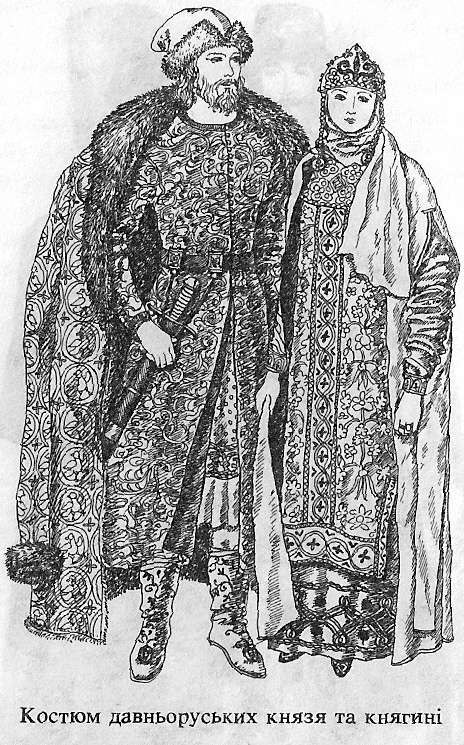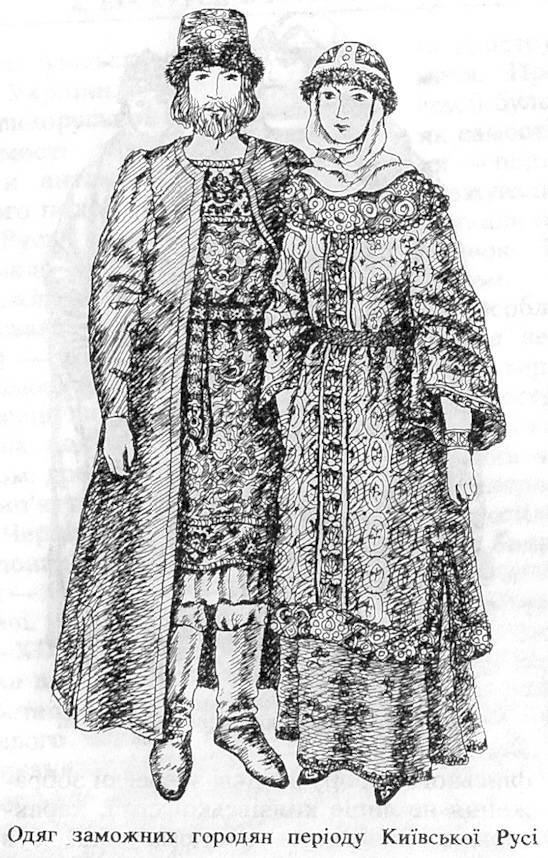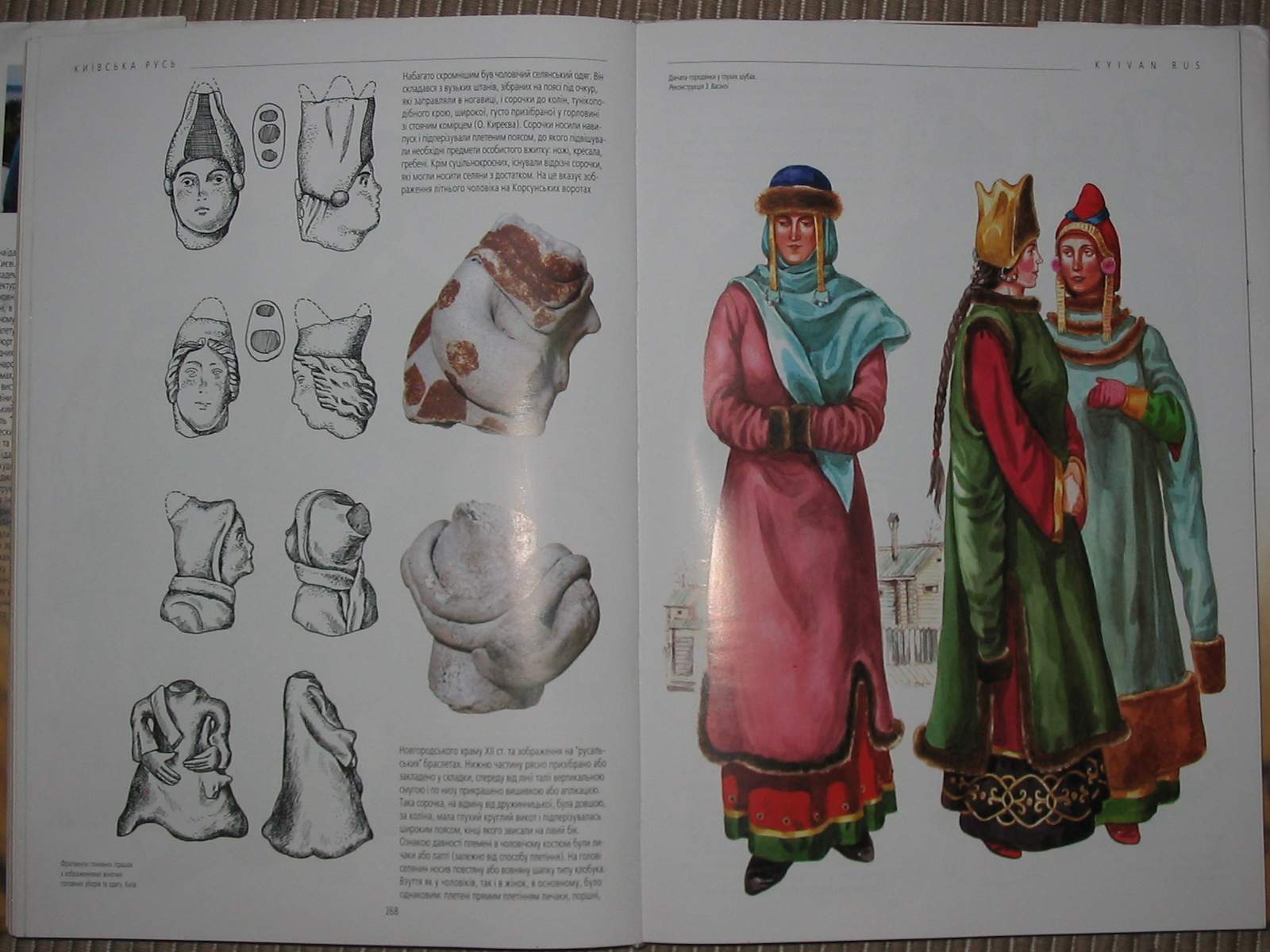


On the left are more sketches of figurines from the period.
| Images of Clothing in the Appanage Period | |||||||||||||||
| The Appanage period is the time when the Mongol Golden Horde conquered most of the area of Kievan Rus'. The political power of the Russians moved northward, to Novgorod and Moscow. Kiev was sacked by the Mongols, and later, was not part of Russia again until the Solviet Union annexed the Ukraine. This time period saw the prominence of Novgorod, both for politics and fashion, though later Moscow came to prominance as the capital of Russia. Because even those cities that were not directly sieged by the Mongols did end up paying tribute to the Horde, a certain amount of fashion crossover occurred. This is when we see the beginning of the popularity of the kaftan over-coat, cut for riding, the offset neck opening, and the standing collar. | |||||||||||||||
 |
|||||||||||||||
| Image 1: Prince and Princess. Note that both are wearing the Novgorod shuba overcoat - his as a cloak toss over his shoulders, hers with her arms through the elbow slits. | |||||||||||||||
 |
|||||||||||||||
| Image 2: Noble couple of a city under Mongol rule. There are some inaccuracies in this image for the man's coat: the sleeves are too short and would not have gathered at the top like that. Also note that the woman appears to be wearing three layers - a long sleeved rubakha with embroidered cuffs, a second rubakha, shorter sleeved and full length in a darker color, and finally a brocaded court dress, called a navershnik, with wide belled sleeves and belted. | |||||||||||||||
 |
|||||||||||||||
| Image 3: These Novgorodian women of the 12th/13th C. are all wearing shubas. Again note the fur lining and the long sleeves. Fur was an incredibly common commodity in Russia throughout history, to the point were certain skins were used as currency just as we use dollar bills today. This representational monitary system, where X fur = Y gold which equaled whatever commodity was for sale, was the first of it's kind in history, and is the system we use today. On the left are more sketches of figurines from the period. |
|||||||||||||||